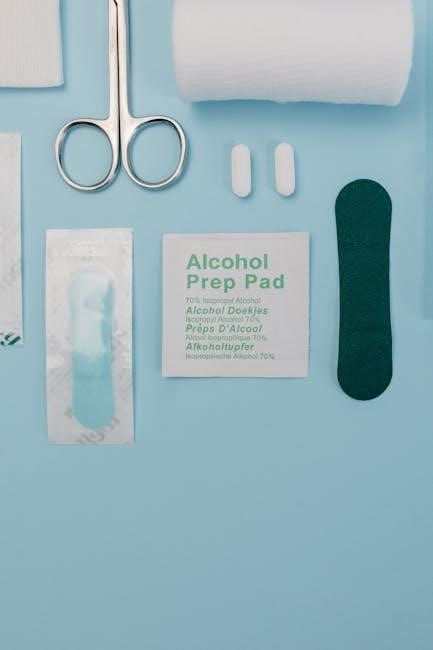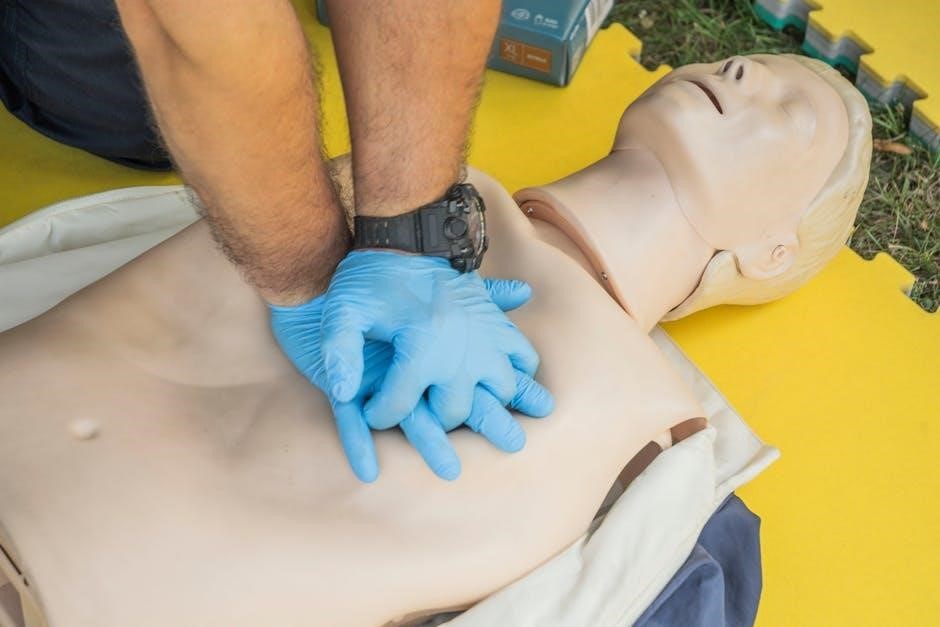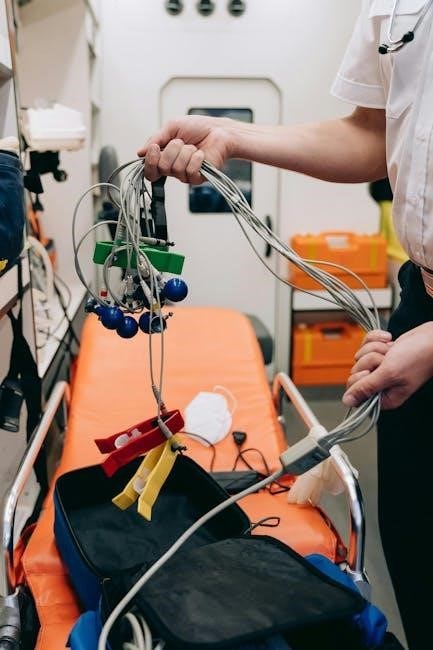
first aid step 1 usmle pdf
First Aid for the USMLE Step 1: A Comprehensive Study Plan
Navigating the USMLE Step 1 requires a focused approach, and utilizing resources like Kaplan’s Qbook alongside First Aid is crucial for effective preparation.
Mastering exam-style questions and test-taking strategies, as Kaplan offers, complements the high-yield content found within the First Aid resource itself.
Understanding the Importance of First Aid
First Aid for the USMLE Step 1 isn’t merely a textbook; it’s a distillation of high-yield information, meticulously compiled to address the core concepts tested on the exam. Its significance lies in its ability to serve as a central anchor for your entire study process. Many students find themselves overwhelmed by the sheer volume of material required for Step 1, and First Aid provides a streamlined, manageable framework.

Consider it a roadmap, guiding you through the essential topics while minimizing the need to delve into excessively detailed textbooks. However, it’s crucial to understand that First Aid is not a standalone resource. It’s designed to be supplemented with question banks – like those offered by Kaplan and UWorld – to solidify your understanding and identify knowledge gaps.
The book’s concise nature demands active learning. Simply reading First Aid passively won’t suffice. Effective utilization involves actively engaging with the material, creating flashcards, and consistently testing yourself. Furthermore, recognizing that Kaplan’s Qbook provides exam-style practice, integrating it with First Aid will significantly enhance your preparation and boost your confidence on test day. It’s a synergistic relationship, maximizing your learning potential.
What is First Aid for USMLE Step 1?
First Aid for the USMLE Step 1 is a widely recognized and highly recommended review resource specifically designed to aid medical students in preparing for the notoriously challenging Step 1 examination. It’s essentially a comprehensive, yet concise, compilation of high-yield facts, concepts, and diagrams covering the fundamental science disciplines tested on the exam – including anatomy, physiology, biochemistry, pathology, pharmacology, and microbiology.
Unlike lengthy textbooks, First Aid prioritizes information most frequently encountered on the USMLE. It’s structured as a rapid-review resource, intended to be used in conjunction with other study materials, such as question banks like Kaplan’s Qbook. The latest editions are continually updated to reflect changes in the exam’s content and format.
The “pdf” format refers to the digital version of the book, offering portability and accessibility. Students often utilize the digital version alongside physical copies for annotation and convenient study on various devices. Mastering the content within First Aid, coupled with consistent practice using exam-style questions, is a cornerstone of successful Step 1 preparation, as emphasized by expert resources.

The Core Content Areas Covered
First Aid for USMLE Step 1 meticulously covers a broad spectrum of foundational medical sciences, organized for efficient review. The core areas include Biochemistry, focusing on metabolic pathways and genetic principles; Physiology, detailing organ system functions; and Anatomy, emphasizing clinically relevant structures.
Pathology forms a significant portion, outlining disease mechanisms and morphological changes. Pharmacology is comprehensively addressed, covering drug classes, mechanisms of action, and side effects. Microbiology delves into bacterial, viral, fungal, and parasitic infections, alongside immunology’s key cells and processes.
The pdf version allows for easy navigation through these sections. Behavioral Science, Statistics, and Epidemiology are also included, recognizing their increasing importance on the exam. Utilizing resources like Kaplan’s Qbook alongside First Aid reinforces understanding within these core areas, ensuring a well-rounded preparation strategy. The book’s structure facilitates targeted review and efficient knowledge consolidation.

Cardiovascular System – High-Yield Topics
Within the Cardiovascular System, First Aid for USMLE Step 1 prioritizes key concepts like cardiac physiology, including the Frank-Starling mechanism and the cardiac cycle. Understanding hemodynamics – blood pressure regulation, cardiac output, and vascular resistance – is crucial, as is knowledge of common valvular heart diseases like mitral stenosis and regurgitation.
The pdf version facilitates focused study on topics such as atherosclerosis, myocardial infarction, and heart failure, detailing their pathophysiology and clinical presentations. Arrhythmias, including atrial fibrillation and ventricular tachycardia, are also high-yield. Congenital heart defects, like Tetralogy of Fallot, require thorough understanding.
Integrating this knowledge with practice questions, such as those found in Kaplan’s Qbook, solidifies comprehension. First Aid emphasizes the interplay between these conditions and their impact on overall cardiovascular function, preparing students for Step 1’s challenging scenarios. Mastering these topics is essential for success.
Respiratory System – Key Concepts
The Respiratory System, as outlined in First Aid for USMLE Step 1, centers on understanding pulmonary function tests – FEV1, FVC, and their ratios – and interpreting arterial blood gases (ABGs). Key diseases like asthma, COPD (chronic bronchitis and emphysema), and pneumonia demand detailed knowledge of their pathophysiology and clinical features.
The pdf resource emphasizes the importance of ventilation-perfusion matching and the effects of hypoxia. Students should grasp the mechanisms of gas exchange and the impact of various respiratory conditions on oxygenation. Pulmonary embolism, pneumothorax, and acute respiratory distress syndrome (ARDS) are also high-yield topics.
Combining First Aid’s concise review with practice questions, like those offered by Kaplan, reinforces learning. Understanding the physiological basis of respiratory diseases and their clinical manifestations is vital for Step 1. Mastering these concepts ensures a strong foundation for tackling related exam questions effectively.
Renal System – Essential Information

The Renal System, as detailed in First Aid for USMLE Step 1, requires a firm grasp of glomerular filtration rate (GFR), renal blood flow, and tubular transport mechanisms. Understanding acid-base balance, and how the kidneys regulate it, is also crucial. Key pathologies like acute kidney injury (AKI), chronic kidney disease (CKD), and nephrotic/nephritic syndromes are high-yield.
The pdf resource stresses the importance of recognizing electrolyte imbalances – sodium, potassium, calcium, and phosphate – and their clinical consequences. Renal tubular acidosis (RTA) and its various types are frequently tested. Understanding the renin-angiotensin-aldosterone system (RAAS) and its role in blood pressure regulation is paramount.

Integrating First Aid’s core concepts with question bank practice, such as Kaplan’s Qbook, solidifies understanding. Focus on differentiating between various renal diseases based on their clinical presentation and laboratory findings. A strong renal foundation is essential for Step 1 success.
Neurology – Focus Areas for Step 1
Neurology, within the First Aid for USMLE Step 1 framework, demands attention to neuroanatomy, neurophysiology, and common neurological disorders. Mastering cranial nerve functions and their associated deficits is high-yield. Understanding the pathophysiology of stroke – ischemic versus hemorrhagic – and its clinical presentations is critical.
The pdf resource emphasizes the importance of recognizing different types of seizures, their EEG patterns, and appropriate treatment strategies. Multiple sclerosis (MS), Parkinson’s disease, and Alzheimer’s disease are frequently tested, focusing on their underlying pathology and clinical features. Spinal cord injuries and their associated syndromes require detailed knowledge.

Combining First Aid’s concise review with practice questions, like those offered by Kaplan, reinforces learning. Focus on localizing lesions within the nervous system based on clinical findings. A solid neurological foundation is vital for achieving a strong score on Step 1.
Endocrine System – Important Hormones & Pathways
The endocrine system, as detailed in First Aid for USMLE Step 1, requires a firm grasp of key hormones and their respective pathways. Prioritize understanding the hypothalamic-pituitary axes – specifically, the HPA, HPT, and HPG axes – and their feedback mechanisms. Dysfunctions within these axes are frequently tested.
The pdf resource highlights the importance of knowing the effects of thyroid hormones, cortisol, insulin, and growth hormone. Diabetes mellitus, including Type 1 and Type 2, and their associated complications, are high-yield topics. Adrenal insufficiency and Cushing’s syndrome also demand focused study.

Integrating First Aid’s content with question bank practice, such as Kaplan’s Qbook, solidifies understanding. Focus on the clinical presentations of endocrine disorders and their underlying biochemical abnormalities. A strong endocrine foundation is crucial for success on the USMLE Step 1 exam.
Gastrointestinal System – Common Diseases & Physiology
The gastrointestinal (GI) system, as presented in First Aid for USMLE Step 1, demands a solid understanding of both normal physiology and common pathological processes. Focus on digestive processes, absorption, and the roles of key hormones like gastrin and secretin. Understanding motility is also crucial.
The pdf resource emphasizes high-yield diseases including peptic ulcer disease, inflammatory bowel disease (Crohn’s and Ulcerative Colitis), and liver cirrhosis. Hepatitis (A, B, C) and their respective modes of transmission are frequently tested. Don’t overlook pancreatic disorders like pancreatitis.
Supplementing First Aid with question banks, like those offered by Kaplan, reinforces concepts. Pay attention to the clinical presentations, diagnostic findings, and appropriate management strategies for each GI condition. Mastering this system is vital for a strong Step 1 score.
Immunology – Key Cells and Processes
Immunology, a cornerstone of USMLE Step 1, requires a firm grasp of cellular and humoral immunity. First Aid for USMLE Step 1’s pdf version efficiently outlines key cells – T cells (helper, cytotoxic, regulatory), B cells, macrophages, and dendritic cells – and their respective functions.
Focus on the major histocompatibility complex (MHC) I and II, antibody classes (IgG, IgM, IgA, IgE, IgD), and the complement system. Understanding hypersensitivity reactions (Types I-IV) is essential, as is the process of antigen presentation. Immunodeficiency disorders, both primary and secondary, are frequently tested.
Utilizing question banks alongside First Aid, such as Kaplan’s Qbook, solidifies these concepts. Practice identifying immune cell roles in various clinical scenarios and interpreting immunological test results. A strong immunology foundation is critical for success on Step 1.
Pharmacology – High-Yield Drug Classes
Pharmacology demands memorization, but First Aid for USMLE Step 1’s pdf streamlines the process by focusing on high-yield drug classes. Prioritize understanding beta-blockers, calcium channel blockers, ACE inhibitors, and diuretics – crucial for cardiovascular conditions.
Master the mechanisms of action, key side effects, and clinical uses of antibiotics, antifungals, and antivirals. Pay close attention to drugs affecting the central nervous system, including antidepressants, antipsychotics, and benzodiazepines.
Integrating practice questions, like those offered by Kaplan’s Qbook, reinforces pharmacological principles. Focus on drug interactions, pharmacokinetic/pharmacodynamic properties, and the ability to apply this knowledge to patient cases. A systematic approach, combined with First Aid and dedicated question practice, is key to conquering this challenging section.
Microbiology – Important Organisms & Infections
Microbiology on the USMLE Step 1 requires recognizing key organisms and their associated infections. First Aid for USMLE Step 1’s pdf efficiently organizes this information, emphasizing bacterial, viral, fungal, and parasitic pathogens.
Prioritize Staphylococcus aureus, Streptococcus pneumoniae, Escherichia coli, and Pseudomonas aeruginosa, understanding their mechanisms of virulence and common clinical presentations. Focus on viral infections like influenza, HIV, and herpesviruses, noting their unique characteristics.

Supplement First Aid with practice questions – Kaplan’s Qbook provides exam-style scenarios. Master identifying organisms based on Gram stain, biochemical tests, and clinical context. Understanding antibiotic resistance patterns and appropriate treatment strategies is also vital. A focused review, coupled with consistent question practice, will build confidence and ensure success in this crucial section.
Biochemistry – Metabolic Pathways & Genetic Concepts
Biochemistry forms a foundational pillar of the USMLE Step 1, demanding a firm grasp of metabolic pathways and genetic principles. First Aid for USMLE Step 1’s pdf streamlines this complex subject, presenting information concisely and effectively.
Prioritize glycolysis, Krebs cycle, oxidative phosphorylation, and gluconeogenesis, understanding their regulation and integration. Focus on genetic concepts like DNA replication, transcription, translation, and mutations. Pay close attention to inborn errors of metabolism and their clinical consequences.
Utilize First Aid in conjunction with question banks like Kaplan’s Qbook to solidify your understanding. Practice applying biochemical principles to clinical scenarios. Mastering enzyme kinetics, vitamin deficiencies, and the interplay between metabolic pathways is crucial. Consistent review and active recall will be key to success in this challenging, yet high-yield, section.
Behavioral Science – Psychological & Social Factors
Behavioral Science on the USMLE Step 1 assesses your understanding of psychological principles and their impact on health and illness. First Aid for USMLE Step 1’s pdf provides a focused review of key concepts, crucial for navigating this often-underestimated section.
Concentrate on learning theories (classical & operant conditioning), defense mechanisms, and stages of grief. Understand the influence of social determinants of health, cultural factors, and doctor-patient communication. Familiarize yourself with common psychiatric disorders – depression, anxiety, schizophrenia – and their pharmacological treatments.
Employ First Aid alongside practice questions, such as those offered by Kaplan, to apply these concepts to clinical vignettes. Pay attention to ethical principles in medicine and the psychological impact of illness on patients and families. Mastering this section requires recognizing behavioral patterns and understanding the interplay between mind and body.
Statistics & Epidemiology – Interpreting Data
The USMLE Step 1 frequently tests your ability to interpret statistical data and epidemiological principles. First Aid for USMLE Step 1’s pdf offers a concise yet comprehensive review of essential concepts, vital for success in this area.
Focus on understanding measures of central tendency (mean, median, mode), dispersion (standard deviation, variance), and statistical significance (p-values, confidence intervals). Grasp the principles of study design – cohort, case-control, cross-sectional – and their associated biases. Learn to calculate and interpret sensitivity, specificity, positive predictive value, and negative predictive value.
Utilize practice questions, like those found in Kaplan’s Qbook, to apply these concepts to clinical scenarios. Pay close attention to interpreting odds ratios and relative risks. A solid grasp of biostatistics and epidemiology is crucial for evaluating medical literature and making informed clinical decisions. Mastering these skills will significantly boost your score.
Utilizing First Aid with Question Banks (Kaplan, UWorld)
Maximizing your USMLE Step 1 preparation hinges on effectively integrating First Aid for USMLE Step 1’s pdf with robust question banks like Kaplan and UWorld. First Aid serves as a foundational resource, providing a high-yield overview of core concepts.
However, passive reading isn’t enough. Kaplan’s Qbook, with its exam-style practice and test-taking strategies, allows you to actively apply your knowledge. UWorld, renowned for its challenging questions and detailed explanations, further solidifies your understanding and identifies knowledge gaps.

The ideal approach involves reading a section in First Aid, followed by completing relevant questions in Kaplan and UWorld. Analyze incorrect answers to pinpoint areas needing further review. Repeatedly revisiting First Aid while working through question banks reinforces learning and builds confidence. This synergistic approach is key to achieving a high score on Step 1.